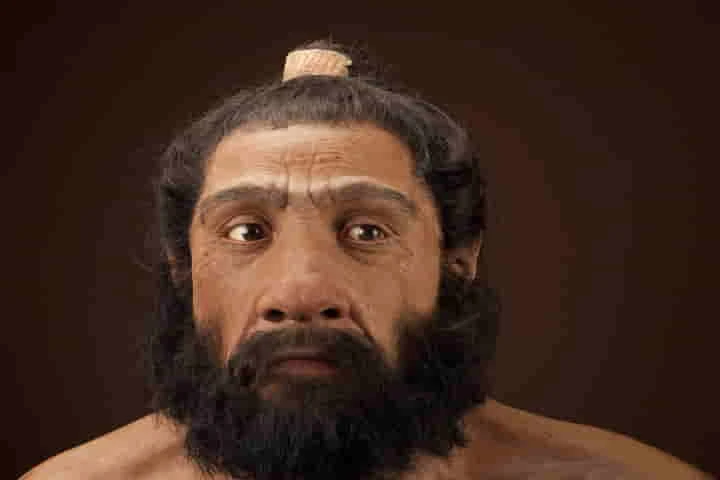

A recent study on Neanderthals suggests that they used fire and nets to trap birds at night in caves (Pic. Courtesy smithsonianmag.com)
<p>
<strong>One has always been fascinated to know how human ancestors lived and survived, and Neanderthal or Homo neanderthalensis are one among them.</strong></p>
<p>
Earlier vast and detailed studies on these hominids&#39; lives suggested that they slept at night while day time was used for hunting. In an article published in smithsonianmag.com, new findings point to Neanderthals working as a team for bird hunting at night during which they used tools like nets and fire torches. This was to trap a cave-dwelling bird, belonging to the corvid family, the choughs states a report in Vice.</p>
<p>
In order to understand how they did it, a team of researchers in Spain decided to replicate their technique. They travelled to caves, and using lamps and nets tried capturing the roosting birds.</p>
<p>
The findings of this study find place in September month&rsquo;s issue of Frontiers in Ecology and Evolution.</p>
<p>
In a statement released by Frontiers, Guillermo Blanco, Madrid&rsquo;s National Museum of Natural Sciences researcher said: <a href="https://www.smithsonianmag.com/smart-news/scientists-simulated-neanderthal-behaviors-by-catching-birds-with-their-bare-hands-180978737/?utm_source=smithsoniantopic&amp;utm_medium=email&amp;utm_campaign=20210926-weekender&amp;spMailingID=45677061&amp;spUserID=MTI4MDgxMTczNjcwMgS2&amp;spJobID=2084635030&amp;spReportId=MjA4NDYzNTAzMAS2">&ldquo;Here, we show that Neanderthals likely</a> preyed on choughs, birds that spend the night in caves, the preferred shelter of Neanderthals. We reconstruct how Neanderthals could have used fire to dazzle, corral, and grab flying choughs at night.&rdquo;</p>
<p>
Closest ancestor of human beings, the Neanderthals, became extinct 35,000 to 40,000 years ago. They are known to hunt mammals like the red deer in the summer and reindeer in the winter, using sharp wooden spears. They also used the animals&#39; hides to clothe themselves while also preying on different birds, including birds of prey, members of crow family and rock pigeons.</p>
<p>
The recent study concentrated on how Neanderthals hunted choughs in the caves which were inhabited by both of them. To begin with the scientists found out how many chough fossils were found in caves which also had the presence of Neanderthal fossils or tools. Chough fossils were found in large numbers in Neanderthal caves located in Europe, especially in Iberian Peninsula archaeological sites. Close examination revealed that in nine locations in the Iberian Peninsula, these remains of chough had bite marks, char marks, and cut marks by tools.</p>
<p>
Having arrived at a hypothesis, scientists decided to test it. They visited the existing caves over a period of several years and learned the art of catching choughs by hand at night. Using lamps to shock them they replicated the torches that Neanderthals may have been carrying.</p>
<p>
Experimental trials numbering 296 were carried out at 70 chough roosting sites and the scientists caught 5,525 birds in total. After the experiment, all these creatures were banded and released unharmed.</p>
<p>
Study author Antonio S&aacute;nchez-Marco, who is a paleo-ornithologist in Barcelona&rsquo;s Institut Catal&agrave; de Paleontologia Miquel Crusafont in a statement said: &quot;We conclude that choughs would have been uniquely vulnerable to Neanderthals if they used artificial light, such as fire, in caves at night.&rdquo;</p>
<p>
Sanchez-Marco went on to add: &quot;We show that when dazzled, choughs either try to escape to the outside, in which case you can catch them with nets across the entrance, or flee upwards to the ceiling, where you can often catch them by hand. Two to three choughs would yield enough energy to be a full meal for an adult Neanderthal, while a few skilled hunters could easily catch 40 to 60 choughs per night.&quot;</p>
<p>
Choughs proved to be a nourishing meal for the early hominids, especially the red-billed chough. This species has the highest concentration of carotenoids, an essential micronutrient, says the Vice report.</p>
<p>
This hunting also reflects Neanderthals behaviour and social skills showing how they lived in groups&nbsp; comprising 10 to 20 adults along with children. Having comprehended that catching choughs during daytime in the open is tough, the hominid chose night revealing their anatomical, technological and cognitive abilities.</p>
The Ministry of External Affairs (MEA) has taken note of the new guidelines issued by…
The Ministry of External Affairs on Thursday said India refused to sign the joint declaration…
The Ministry of External Affairs spokesperson Randhir Jaiswal said that India, so far have evacuated…
Axiom 4 mission aboard the SpaceX Dragon spacecraft successfully docked at the International Space Station…
In a significant moment for regional cinema and cultural dialogue, the premiere of 'Harmukh', the…
Union Home Minister Amit Shah on Thursday said that languages were not just a medium…